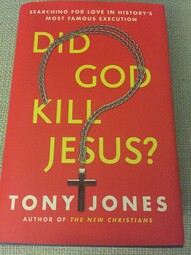
Reading inspires me. So as part of my work on my next book – a devotional for teenagers about Jesus based on the research published in my first book, The Jesus Gap – I picked up Tony Jones' Did God Kill Jesus?: Searching for Love in History's Most Famous Execution.
According to Tony, “throughout history, the death of Jesus has been the answer – it's the question that has changed.” Knowing this, in Did God Kill Jesus? Tony explores several theories of atonement as well as the questions they answer. He looks at those that dominate church conversations and are, therefore, most influential on today's practical theology like the payment model and substitutionary atonement as well as more obscure theories of atonement like the mirror model. He critiques each theory of atonement using these questions:
- What does the model say about God?
- What does it say about Jesus?
- What does the model say about the relationship between God and Jesus?
- How does it make sense of violence?
- What does it mean for us spiritually?
- Where's the love?
For Tony, the last question, “Where's the love?” is of utmost important since “there can be no separation between God and Jesus; We cannot set a wrathful and vengeful God in opposition to a loving and gracious Jesus.” For an atonement theory to be valid, it must, therefore, be an expression of God's love since “Jesus was the love of God in the flesh.”
While Tony offers an honest and thoughtful critique of each atonement theory he examines, one of the things I respect about his work in Did God Kill Jesus? is that he also points out the value in each. According to him, “the death of Jesus on the cross is so powerful because there is enough meaning in the event for all times, all places, and all people.”
Above all, what I appreciate about Did God Kill Jesus? is that it's not merely an academic discourse on various atonement theories. Instead, Tony explores how our understanding of the atonement matters to both our faith and the world around us. He correctly states that “How we understand the cross also colors how we picture God, Jesus, ourselves, and our mission in the world and how we see others.” He therefore devotes the entire last section of the book to how the crucifixion of Jesus changes how we live. His exploration of the ways of peace, solidarity, and presence are true examples of how indeed the cross is good news.